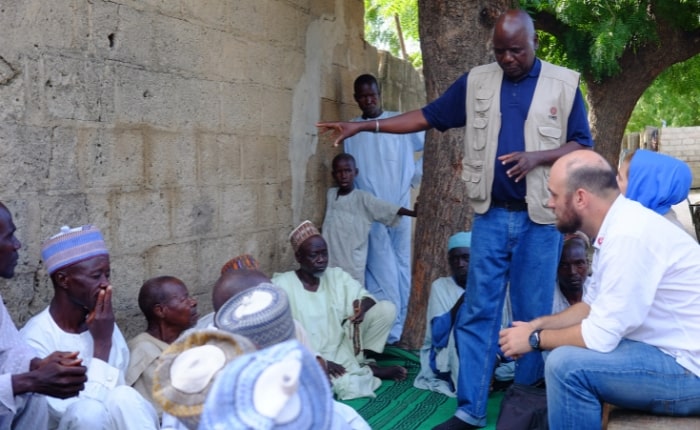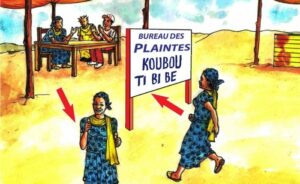Our teams work for and with communities and people in vulnerable situations. In our 2022-2025 strategic plan, our NGO committed to systematically enabling the people and communities that we assist to participate in our programs. This reflects our determination to improve accountability.
Achieving a better balance of power between humanitarian actors and crisis-affected populations
Any form of humanitarian assistance leads to a power imbalance between the organization providing aid and people who are in vulnerable situations. If we are conscious of this imbalance, we can take steps to redress it. Our aim is to increase community participation and inclusion through clear, responsive communication that can be accessed by all, and especially by people who are marginalized.

Ensuring that affected populations have their say in humanitarian responses
Our NGO has set itself the objective of developing a range of participation methods. For example, this involves setting up water management committees run by community members, as well as systematically carrying out assessments within the community so that their opinions and needs are taken into account when designing projects. These actions help improve the quality of our programs and ensure that dignity and cultural differences are respected.

Accountability to the communities within which our teams work also involves setting up feedback, complaints and response mechanisms so that we can provide explanations and respond to any criticism or questions.
Registering and taking into account community feedback
A Feedback, Complaints and Response Mechanism (FCRM) has been set up at every location where our NGO works. This system allows community members to submit any questions, comments or complaints about our organization’s presence or activities.
To ensure that the mechanism is adapted to local customs, it is designed and implemented with the communities themselves. Our teams always base the feedback system on local needs and habitual modes of communication—face-to-face, written, telephone, WhatsApp—so that as many people as possible can access it.
Once the community has been informed and shown how to use the tool, our teams make a commitment to respond to comments or complaints and to take into account any feedback.
Anyone who uses the FCRM will receive a response, either immediately, if possible, or within a few days.
All our teams are trained to use the mechanism so that they can encourage communities to use it. For example, at distribution sites, our staff ask people receiving aid for their opinion on the quantity and quality of food products or equipment distributed, site accessibility, waiting times, etc. Other methods may also be used, such as a complaints box, a complaints office or a helpline.
